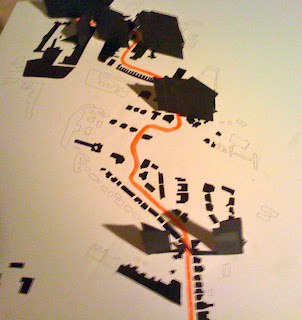










"A combination of parts into a pleasing or orderly whole; congruity"
Portsmouth in the 19th Century...
During the 19th century Porstsmouth began to grow across the whole of Portsea Island, swallowing up the villages of Buckland and Fratton. The expansion of the city saw the creation of further suburbs such as Landport, Stamshaw, Southsea and Somerstown. At the turn of the century Southsea rapidly began expanding eastwards and by the end of the century Somerstown had reached Fawcett Road and Lawrence Road and had spread along Albert Road. The population around 1900 had reached 190’000, around the same as it is today.
There were various transport improvements throughout the 19th century. The town saw its first horse drawn buses around 1840 and a horse drawn tram line in 1867, the railway reached Portsmouth in 1847. Around 1820 a canal was opened that began just outside the town (where Arundel Street is today) and ran down the the south east of Portsdown island. The barges were then towed by steam tugs across Chichester harbour where the canal began again. Unfortunately the canal proved unsuccessful and closed in 1838.
At this point in time Portsmouth was a dirty city and there were smallpox and cholera epidemics that killed several hundred people. In response to this there was a push to try and improve the health and well being of the population with the introduction of the towns first park (Victoria Park) and library, its first hospitals and the introduction of a police force. In the 1840’s the Clarence Esplanade was built by convict labourers and the Clarence Pier opened in 1861, both deriving their names from Portsmouth ex military governer Lord Fitzclarence. It had become clear during the 19th century that public amenities and green spaces were an essential part of solving the health and social problems that the city had previously experienced.
Portsmouth in the 20th Century...
Into the 20th century and Portsmouth was still expanding rapidly, engulfing the villages of Cosham, Copnor, Milton, Drayton and Farlington. Around 1911 the first council houses began being built to cope with the ever increasing population that, by now, had reached 260’000. The sudden growth of housing was also partly due to slum clearance as much of the existing housing in Portsmouth was deemed uninhabitable for humans. Council housing continued to be built throughout the century with mixed results. After bombing wiped out over 10% of homes during World War 2, pre-fabricated housing provided a fast and effective solution to the housing crisis and shortly afterwards council estates began appearing around Portsea Island around areas such as Paulsgrove and Leigh Park. However, in many cases much of the newly erected housing was built to an extremely poor standard and created many other problems. One council estate at Portsdown Park suffered continueous problems with damp and eventually had to be demolished only 17 years after being built.
The horse drawn tram system was replaced with an electric trams at the start of the century, but closed down permanently in 1935/36. 1919 saw the first motor buses running in Portsmouth, signalling the new era where the automobile would become the future focus of travel developments in the town.
The dockyard workforce fluctuated throughout the early part of the centurly, mostly due to two World Wars, but when the dust had settled it was drastically reduced, making up only 14% of manufacturing jobs in the city where it had once been so prominant. Traditional industries such as brewing and corset making were also prospering in the early part of the century, but these faded away as the city council tried to diversify Portsmouth’s industries. In order to lay down the foundations for future development, industrial parks were created and paved the way for expansion into in electricals, electrical engineering and services which are now prominant employers in the town. Portsmouth has also created a thriving tourism industry based around its rich military and maritime history. Attractions such as the historic dockyard, Gunwharf Quays and Spinaker Tower are able to pull in thousands of people a year and have become another major employer.

